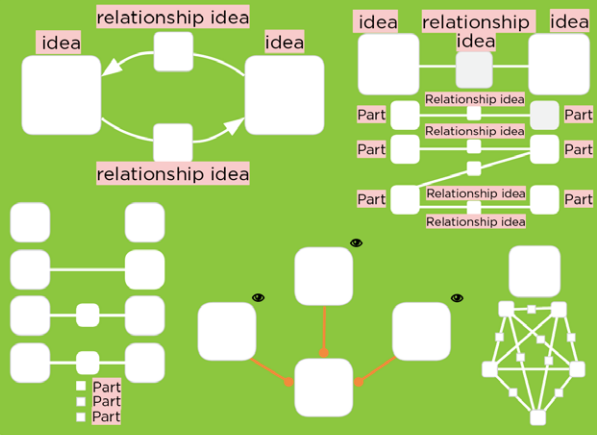Teaching as a Learning Technique: DSRP/CAS Explainer Media Winners
There are a lot of techniques for learning something new and the learning sciences give us insight into what works: scaffolding, repetition, practice, metacognition, experiential learning and reflection, social cognition, embodied cognition, MAC, etc.
But I’ve been a teacher my entire life and anecdotally I will share that the absolute best way I have found to learn something is to teach it. I think this is true for three reasons: (1) the metacognition of teaching, (2) the care implicit in teaching, and (3) the social pressure of teaching.
- The Metacognition of Teaching: Something about teaching to others (especially beginners) forces you to be metacognitive and get into the mind of the learner; understanding their mental models and how they differ from the target mental model (the mental model you want them to learn). We call this mental model matching.
- The Care Implicit in Teaching: Something about teaching also increases the chances that you’ll put love and care into the task. We do this experiment all the time at home with the kids: get some sandwich ingredients. Make a sandwich with care and love and attention to every detail. Now make another sandwich with all the same ingredients but this time be disengaged, multitask on something else, and care less. Now blind taste test the sandwiches with your family and see if there is a difference that can be tasted! It always works. Something about good teaching requires not just the tactical techniques and tools but the somewhat more intangible care and love that we put into it.
- The Social Pressure of Teaching: No person likes to look stupid especially in front of other humans. The social pressure of possibly looking stupid in front of people makes teaching something, the absolute best way of learning it. So, the impending deadline will get you boning up on the material and the fear of social embarrassment ensures that you find creative ways to explain the ideas that will get across. Don’t believe me? Take something you think is beyond your grasp (quantum entanglement?) and set a deadline for three days when you teach it to 10 people publicly (COVID-online only of course).
I often tell our students the story of when Laura and I met on a National Science Foundation (NSF) grant to incorporate DSRP-Systems Thinking (ST) into the evaluation of Science. I had been teaching a graduate-level course on Systems Thinking for doctoral students. Laura’s job on the grant—as an expert in translational research (among other things)—was to help “translate” the technical and sophisticated aspects of DSRP Theory into accessible science without loss of fidelity. I spent the first few weeks teaching Laura and the grant team what DSRP-ST was all about. After a few weeks, Laura came to me and said,
“I know exactly what we need to do.”
“What?” I said.
“We need to go out and teach kindergartners DSRP!” Laura said.
And that was the beginning of a great adventure that lasted over a decade, where we taught DSRP to kindergartners, 1st graders, 3rd graders, 8th graders, high schoolers, undergrads, factory workers, scientists, and CEOs.
Because teaching something is one of the best ways to learn something, we incorporate it into our courses at Cornell. And it works. One example is that every year our first challenge for our Fall Systems Thinking course is for students to produce an explainer video, poster or any other media that can stand alone and teach any of the concepts (large or small) that we explore in the course. Each year, we are treated to a panoply of creative new ways to teach CAS, DSRP, the ST Loop, Jigs, Sliders, or the Ethics of DSRP-ST. And of course a few flops. But, even the flops teach us what doesn’t work, or didn’t work, or needs some polish. So all the attempts are courageous and successful.
This year was no different. Here are some of the winning challenges.
- First Place:
- Ben Carver - an absolutely brilliant original song and lyrics. We highly recommend reading the lyrics which are under the youtube video.
- Second Place (tie):
- Andrew Wen - fantastic children’s book remake of Little Red Riding Hood
- Allison Kim - poster series with great abstract and specific examples of the DSRP Structures
- 3rd Place:
- Patrick Kastner - a great webpage with model simulation, explanation, and experiential activity on CAS.
Honorable Mentions
- Alina Santiago - A “newsletter” making DSRP applicable and relevant to a particular audience (sports/athletes) (need to get as a PDF).
- Rebecca Schimenti - An explainer video on DSRP/CAS.
- Pond Doungpummesr - An explainer video illustrating DSRP through food.
- Ashley Hock - A children’s book Explaining DSRP using a garden.
- David Colle - A simple but effective infographic on DSRP and a Kelp Forest Ecosystem.
Enjoy the great work of these sharp students!
To learn more about Systems Thinking (DSRP) get the book, Systems Thinking Made Simple.
.png?width=150&height=150&name=CRL%20GOAT%20Logo%20(4).png)



